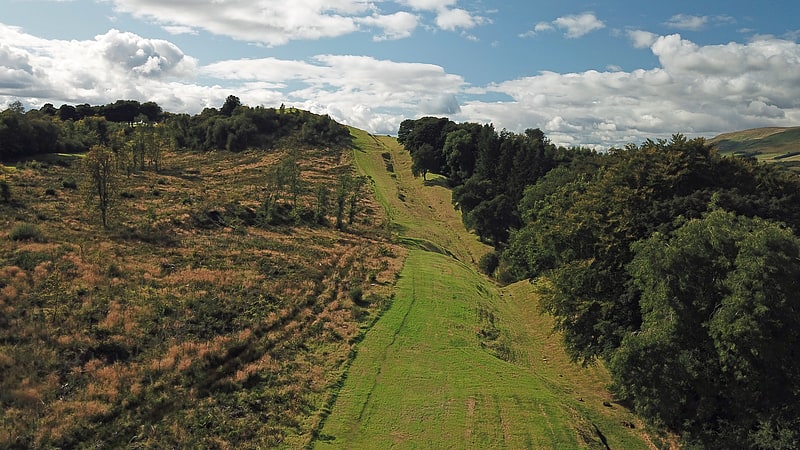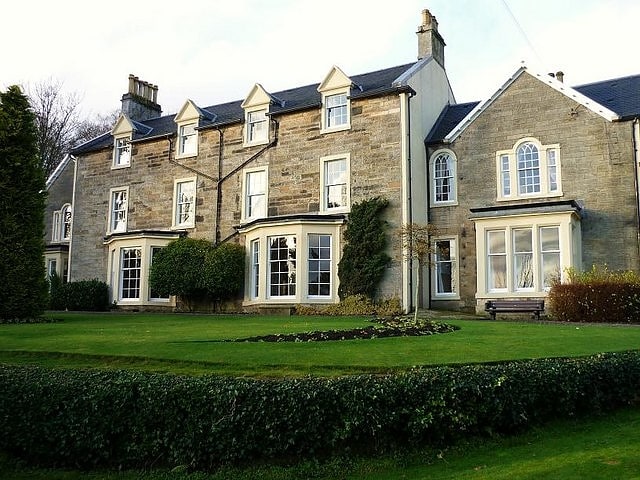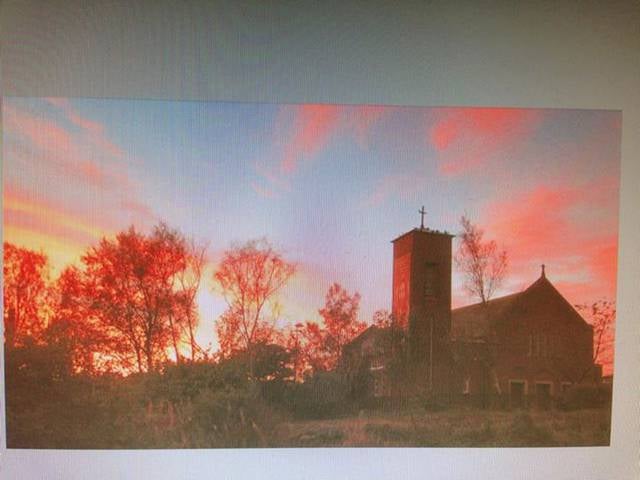Discover 4 hidden attractions, cool sights, and unusual things to do in Kilsyth (United Kingdom). Don't miss out on these must-see attractions: Antonine Wall, Colzium, and Peggie's Spout. Also, be sure to include Croy railway station in your itinerary.
Below, you can find the list of the most amazing places you should visit in Kilsyth (Scotland).
Table of Contents
Antonine Wall

Ruins of an ancient Roman fortification. The Antonine Wall, known to the Romans as Vallum Antonini, was a turf fortification on stone foundations, built by the Romans across what is now the Central Belt of Scotland, between the Firth of Forth and the Firth of Clyde. Built some twenty years after Hadrian's Wall to the south, and intended to supersede it, while it was garrisoned it was the northernmost frontier barrier of the Roman Empire. It spanned approximately 63 kilometres and was about 3 metres high and 5 metres wide. Lidar scans have been carried out to establish the length of the wall and the Roman distance units used. Security was bolstered by a deep ditch on the northern side. It is thought that there was a wooden palisade on top of the turf. The barrier was the second of two "great walls" created by the Romans in Great Britain in the second century AD. Its ruins are less evident than those of the better-known and longer Hadrian's Wall to the south, primarily because the turf and wood wall has largely weathered away, unlike its stone-built southern predecessor.
Construction began in 142 AD at the order of Roman Emperor Antoninus Pius, and took about 12 years to complete. Antoninus Pius never visited Britain, whereas his predecessor Hadrian had done so. Pressure from the Caledonians may have led Antoninus to send the empire's troops further north. The Antonine Wall was protected by 16 forts with small fortlets between them; troop movement was facilitated by a road linking all the sites known as the Military Way. The soldiers who built the wall commemorated the construction and their struggles with the Caledonians with decorative slabs, twenty of which survive. The wall was abandoned only eight years after completion, and the garrisons relocated rearward to Hadrian's Wall. Most of the wall and its associated fortifications have been destroyed over time, but some remains are visible. Many of these have come under the care of Historic Environment Scotland and the UNESCO World Heritage Committee.[1]
Colzium

Park in Scotland. Colzium House and Estate is about 500 metres to the north-east of Kilsyth, North Lanarkshire, Scotland. The present house dates from 1783 and was extended and modernised in 1861. The name may mean "defile leap".
W Mackay Lennox bought Colzium House and its policies in 1930 and in 1937, on his retiral as Town Clerk, he presented them to Kilsyth Burgh, in memory of his mother. The house and estate are principally used for public recreation, as the venue for the annual Kilsyth International Carnival in mid August, an "Italian Picnic" – a gathering of Italian/Scottish families, and functions such as weddings and parties. There is also a fine walled garden and a small theatre, the "clock theatre". A children's adventure playground has been opened.
The estate still contains the ruins of Colzium Castle just 100 metres north of Colzium House at the point where the driveway turns sharp left to Tak-Ma-Doon Road. The first building here was a large L-plan castle built by the Livingstons of Callendar in the mid-15th century to replace the ancient motte. A substantial hall block was added in 1575.
The castle was demolished by the 3rd Viscount of Kilsyth in 1703, immediately prior to his accession to the title. The family lost the estate due to their Jacobite sympathies, and it then became the property of the Edmonstone family from Duntreath.
There is an ice house c. 1680 in the glen of the Colzium Burn which was excavated in 1977 and may still be viewed. The estate also contains the oldest curling ponds in the world. Kilsyth Curling Club, the world's first recorded curling club, was founded in Kilsyth in 1716.
The Battle of Kilsyth (1645) in the Wars of the Three Kingdoms was fought just a kilometre to the east. A ring, supposed to be the one lost by Lady Kilsyth, was reported to be kept at the house.[2]
Peggie's Spout

Peggie's Spout is a waterfall of Scotland.[3]
Croy railway station

Church
Address: Constarry Road, Kilsyth